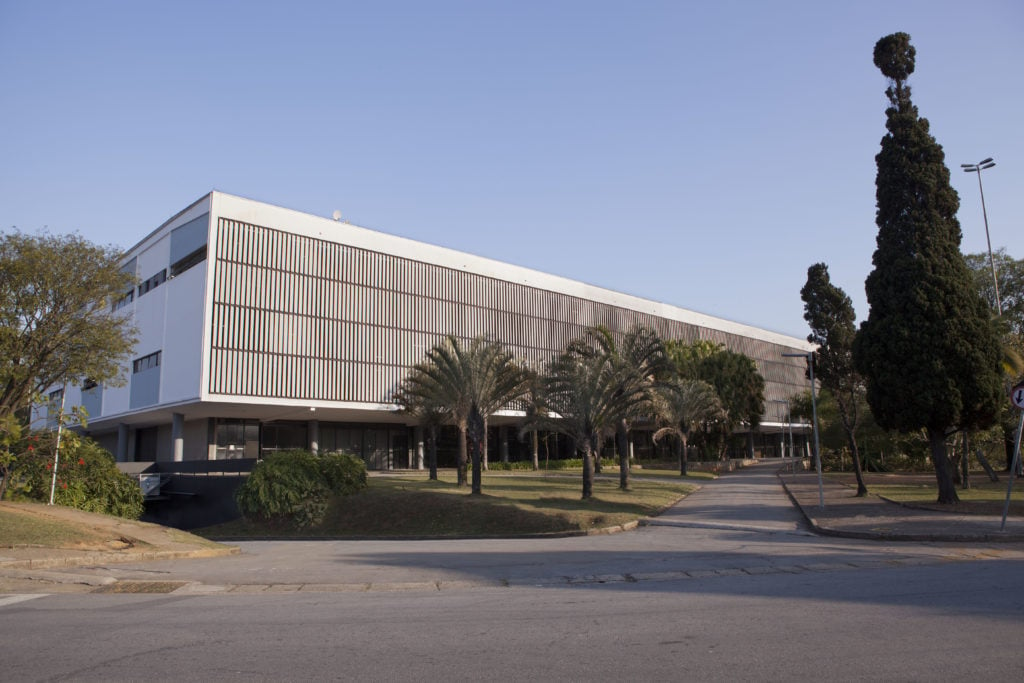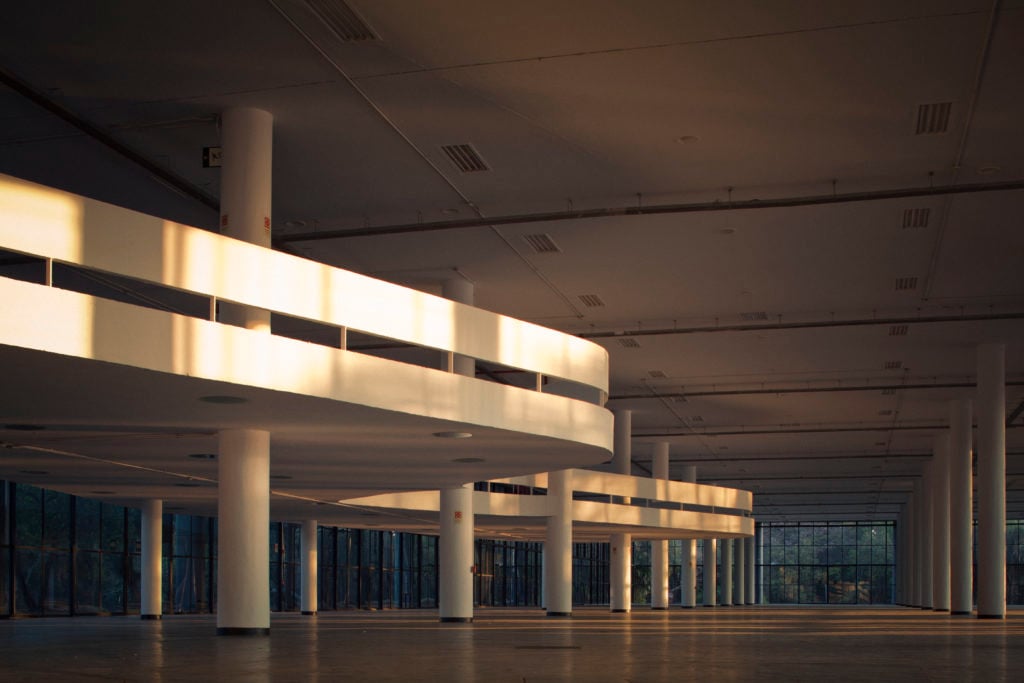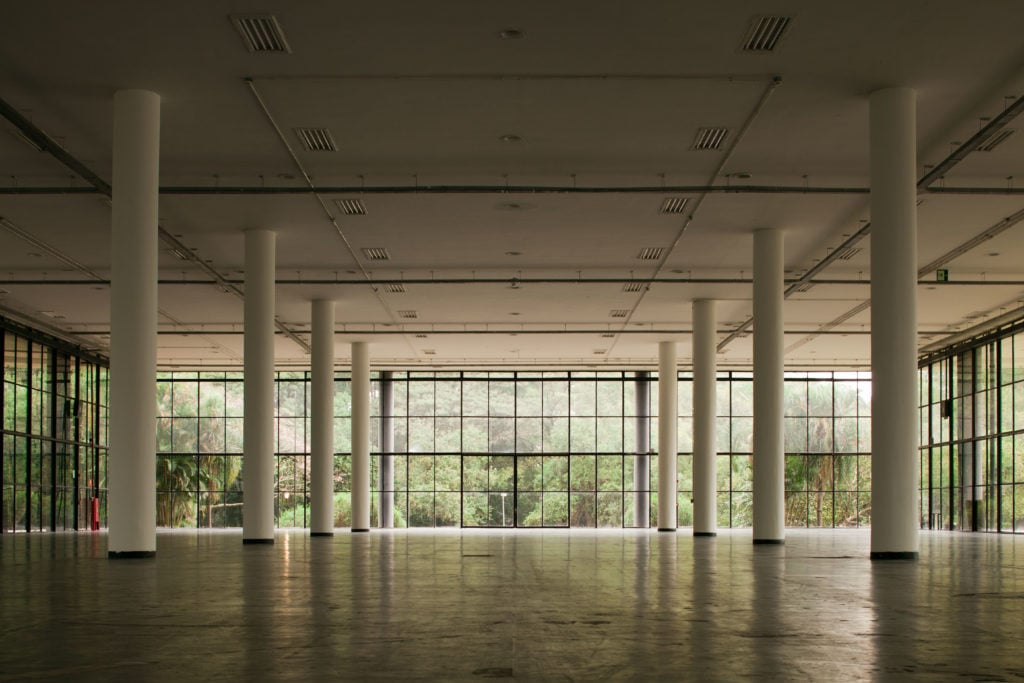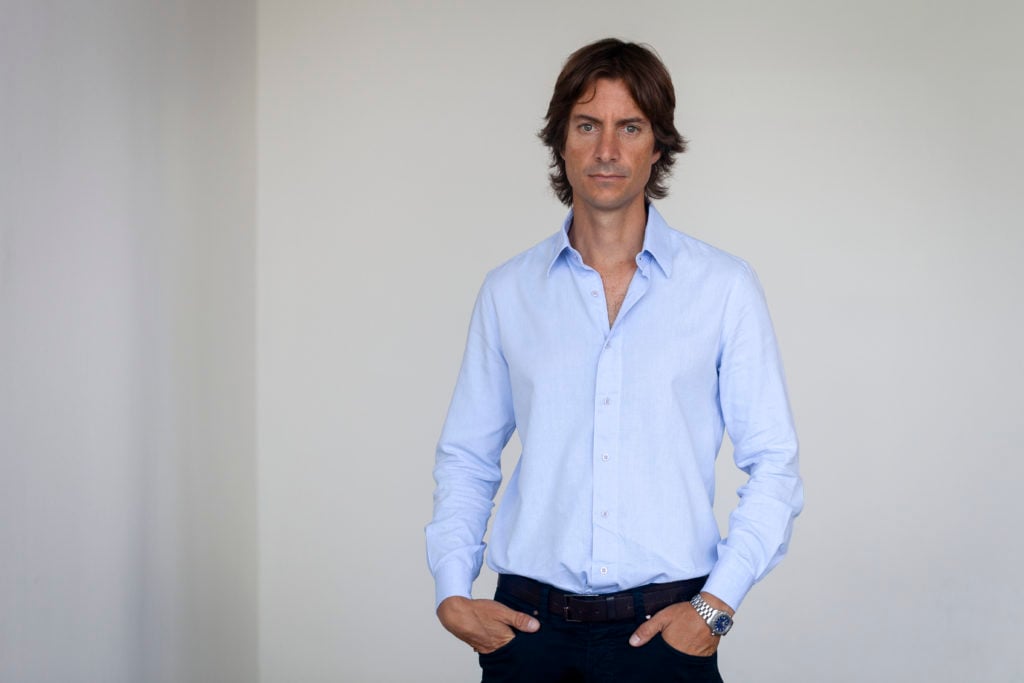Like many countries throughout the world, Brazil today is fundamentally divided. This dynamic has never been more apparent than with the election last fall of president Jair Bolsonaro, a right-wing figure criticized by detractors for his homophobic, misogynistic, and anti-environmental views, and who, as one of his first acts after being sworn into office in January, disbanded the country’s Ministry of Culture.
Next year’s Bienal de São Paulo aims to show that art is not a casualty of the culture wars but a tool for overcoming them.
For the 34th edition of the venerable event, curator Jacopo Crivelli Visconti will stretch the scope of the biennial both in terms of time and space. Rather than sticking to São Paulo’s Biennial Pavilion, as previous iterations of the show have, Visconti’s version will expand to other institutions throughout the city. And it won’t just take place within the normal September to December time frame. The 2020 iteration will begin in the spring and evolve through to the end of the year.

The facade of the Biennial Pavilion. © Pedro Ivo Trasferetti / Fundação Bienal de São Paulo.
Last year’s 33rd edition of the Bienal, organized by Gabriel Pérez-Barreiro, also claimed to have a mission to rethink the event’s structure, delegating the curatorship to multiple artist-curators for what amounted to a series of smaller shows within the big show, in an effort to make the experience less ideological and more focused on individual artistic visions. Opening just as it became clear that the hard right Bolsonaro would win, that show was criticized by some for not being political enough.
For the Italy-born, Brazil-based Visconti, the Bienal is “both an art exhibition and an institutional take on what the role of an event like this should be within the exact moment and location in which it takes place.” The double-track approach is part of his biennial’s message.
“The goal is to conceive the Bienal within the context in which we live,” explains Visconti, “which is this very polarized political and social moment—in Brazil, certainly, but in many other places around the world as well. The idea is to respond to the political situation by emphasizing how essential it is at this time to show how relations can be established, especially with those that are different than you.”
Explaining this conceit, the curator points to Martiniquan writer and poet Édouard Glissant—specifically Glissant’s seminal book, Poetics of Relation, which posits that identity is formed in relation, not isolation. “People have a tendency to pretend that those who are different cannot be fully understood, that they’re invisible or simply not there,” says Visconti. “It’s essential that we not pretend the other is the same as we are. This effort in respecting the other is, for me, a lesson that is very important in this particular moment we live in.”

The interior of the Biennial Pavilion. © Pedro Ivo Trasferetti / Fundação Bienal de São Paulo.
Visconti and his team are fielding proposals from architectural firms to shape the pavilion in a way that’s befitting such a mercurial event. It will not be until the plan for the updated space is set that the curator will begin seeking out artists, preferring, as he does, to choose artworks that fit holistically within the show, rather than retrofitting a venue to the work.
The first of three solo shows will kick off the biennial next March. It will be located within a section of the pavilion, while the two additional shows, which will open in succession soon thereafter, will occupy other sections of the building. All three will be absorbed into the biennial’s main exhibition, which will open to the public in the fall.
At that point, the show will also expand to other cultural institutions within São Paulo, including the Museu de Arte Moderna de São Paulo, the Museu de Arte de São Paulo Assis Chateaubriand, and the Centro Cultural São Paulo. In all, 21 institutions are confirmed as of right now, though details are still being worked out.

The ground floor of the empty Biennial Pavilion, 2017. © Pedro Ivo Trasferetti / Fundação Bienal de São Paulo.
“The first episodes of the Bienal, consisting of solo shows, can be considered as standalone statements,” Visconti writes in the show’s description. “Gradually, as the building becomes increasingly occupied, these exhibitions will begin to be placed in relation with other artworks and other reflections, becoming part of a more complex and interlinked discussion, which, in its final stage, will expand to the city.”
This dispersion throughout the Brazilian metropolis is his way of breaking down barriers.
“We want to address different audiences while being very direct and honest, and to bring a broad and diverse set of institutions to work together,” the curator concludes. “My goal is that both a specialized audience and a more generalized one can stand in front of the same work and see different things in front of it. Given the social and political polarization that we see today, that experience is more important than ever.”









